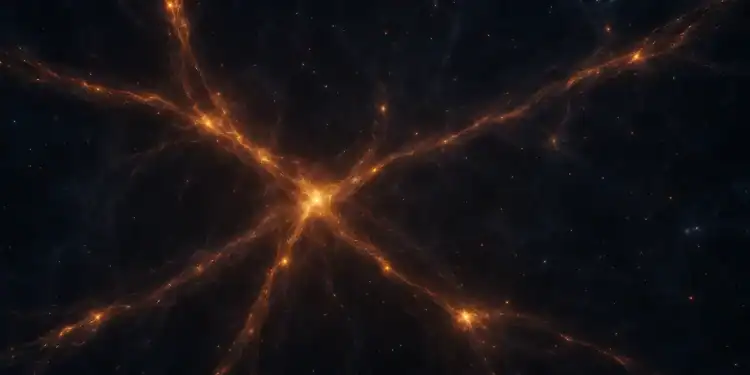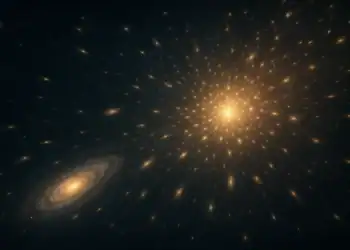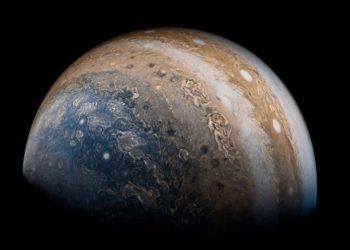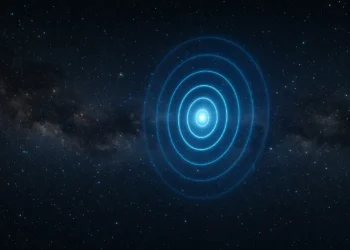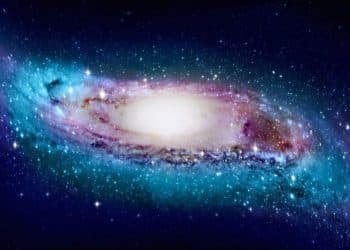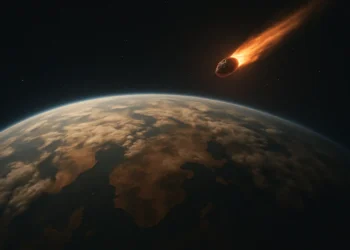Dark matter is one of the biggest mysteries of modern science, because we can’t see it, touch it or feel it with our current instruments, and yet, we know it’s there because we can see how it affects galaxies, and its presence is felt through its gravity. Light bends around it as it travels across the universe, and the distribution of dark matter is known because of the way galaxies and galaxy clusters move, and the universe itself evolved differently than it would have if dark matter weren’t present.
The following 10 facts are a summary of what scientists have learned about this invisible stuff.
-
It outweighs the stuff we can see, because scientists have taken data from a number of missions, including the European Space Agency’s Planck mission, to show that regular atoms make up only about 5 percent of the universe, while dark matter makes up about 26 percent, and dark energy about 69 percent, which means that everything we can see and touch is only a small fraction of the universe’s mass-energy budget.
-
It’s invisible to light, because dark matter doesn’t emit, absorb or reflect any electromagnetic radiation, so our telescopes can’t spot it directly, but we know it’s there from the gravitational pull it exerts on stars, planets and galaxies, and stars in the outer regions of galaxies move faster than the stars closer to the center, which wouldn’t be possible if all we could see was the total amount of mass in the universe.
-
It’s not a new idea, since in the 1930s, Swiss astrophysicist Fritz Zwicky noticed that galaxies were moving so fast within galaxy clusters that the clusters should be flying apart, unless there was some invisible mass holding them together, which he called “dunkle Materie” — dark matter, and in the 1970s, Vera Rubin and Kent Ford made the same discovery in the rotation curves of spiral galaxies, thus turning it from a hunch to a fact of modern cosmology.
-
The Big Bang afterglow agrees, because dark matter affects the cosmic microwave background, the afterglow of the Big Bang, and satellites like WMAP and Planck have mapped the tiny ripples of heat in the CMB in exquisite detail, which agree with models that include dark matter, and without it, galaxies would not have formed so quickly.
-
It’s not made of normal atoms, because if dark matter were made of protons, neutrons or electrons, we would see clear signatures of that in the cosmic microwave background and in the abundance of light elements created in the first few minutes after the Big Bang, but we don’t, so that means dark matter is some other kind of particle.
-
Top candidates for dark matter are WIMPs and axions, because weakly interacting massive particles (WIMPs) and axions are two of the top contenders, where WIMPs would be heavy and interact via gravity and the weak force, while axions would be extremely light, and several experiments, such as XENONnT, LUX-ZEPLIN and ADMX, are currently hunting for signs of WIMPs and axions.
-
It molds galaxies and clusters, because dark matter provides the gravitational scaffolding that keeps galaxies and galaxy clusters together, while it also warps light across the universe, according to Einstein, where mass warps space and bends light, an effect called gravitational lensing, which has been observed by the Hubble Space Telescope, the Atacama Cosmology Telescope and other observatories, that have seen distant galaxies that are stretched and warped by massive, invisible structures, and those distortions create maps of where dark matter is.
-
It might only feel gravity, because no lab has yet detected dark matter interacting with anything except gravity, and the lack of signals at the Large Hadron Collider and other facilities has led some researchers to explore other ideas, such as self-interacting dark matter and sterile neutrinos.
-
It draws the cosmic web, because on the largest scales, galaxies are arranged into a web of filaments and galaxy clusters, which matches the distribution of dark matter in both simulations and maps of gravitational lensing, and dark matter’s gravity drew normal matter into those structures, giving the universe its large-scale architecture.
-
The existence of dark matter is supported by a wide range of observations, from the rotation curves of galaxies to the cosmic microwave background, therefore, whether it turns out to be a new particle, a tweak to gravity, or something we haven’t yet imagined, solving this mystery is key to understanding the universe and what it’s really made of.



